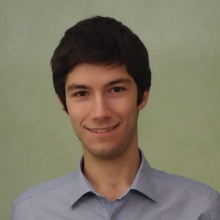Contact
Politecnico di Milano, Computational Science and Engineering
Milano
Italy
Subject
A Fully Implicit Higher Order Staggered Grid Formulation of the Navier-Stokes Equations for Coupled Flow Systems
Anna Scotti (Polytecnico di Milano)
Rainer Helmig (University of Stuttgart)
Melanie Lipp (University of Stuttgart)
Edward Coltman (University of Stuttgart)
1st September 2018 - 28th February 2019
An understanding of flow and transport processes between porous medium and turbulent free-flow domains is necessary in a wide range of industrial, environmental and medical applications.
A numerical study of this phenomenon generally involves a coupled system made of one subdomain where the free-flow is described by the (Navier-)Stokes equations and another subdomain where a REV-scale approach, such as the Darcy's law, is employed to model the transport in the porous medium.
Within the turbulent free-flow domain, an accurate description of the development of turbulent eddies is crucial. Aside from the implementation of turbulence models used to simplify the Navier-Stokes equations, the introduction of higher-order schemes in spatial discretizations has helped to develop more realistic solutions to these equations in complex geometries.
A fully implicit Navier-Stokes solver on a staggered grid has been developed in the DuMux framework, and is available for use. Modifying this model and the accompanying turbulence models to include a higher-order spatial scheme would improve its ability to simulate the turbulent eddies that appear at the rough interface between a free-
flow and a porous media flow domain.
The main tasks will be to:
- Develop and implement a higher-order method for the Navier-Stokes equations on a staggered grid. The QUICK method, or the TVD methods are possible examples of higher-order methods. Test these methods in a simple free-flow environment and compare their results against each other, to solutions made by first-order schemes, analytical solutions, and with experimental data.
- Using the above modifications to the Navier-Stokes equations, use an available turbulence model to simulate the free-flow domain in a coupled isothermal one-component free flow and porous media flow model. Compare the results to solutions from first-order schemes and other models. These coupled test cases should include porous-media obstacles and compare the development of turbulent eddies to solutions using other methods.


